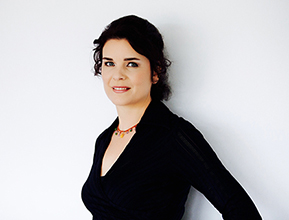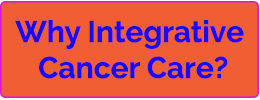What are some potential benefits of exercise for cancer to reduce cancer  risk and support cancer patients?
risk and support cancer patients?
- Helps prevent certain types of cancer
- Increases survival in some people that have been diagnosed with cancer
- Helps prevent obesity—a major cancer risk factor
- Improves quality of life during and after cancer treatments
- Reduces cancer treatment side effects in some people
- Supports health benefits against other chronic conditions that may be associated with cancer1-3
These benefits from exercise for cancer provide significant health and healing improvements. A reduction and prevention of being overweight or obese helps cancer prevention or reduces cancer. Exercise also supports anti-inflammation, insulin regulation, hormone metabolism, and other wellness components against cancer.
Outside of specific studies evaluating exercise for cancer, what are overall physical benefits of exercise?
- Reduces stress
- Improves mood, confidence, and emotional balance
- Increases energy, strength, flexibility, and stamina
- Improves heart function
- Lowers blood pressure and total cholesterol
- Lowers blood sugar
- Controls weight
- Decreases body fat
- Increases lean tissue/muscle mass and bone density
- Accelerates lymphatic flow
- Enhances metabolism and detoxification efficiency4-5
What are the current physical activity recommendations for adults?
The Centers for Disease Control and Prevention recommend the following exercise guidelines for healthy adults under age 65 to maintain health and reduce the risk of chronic disease.
Moderate-intensity physical activities for at least 30 minutes on 5 or more days of the week (totaling 2 hours and 30 minutes; if you need to only exercise 4 days, then increase to almost 40 minutes)
AND
Muscle-strengthening activities on 2 or more days a week with all major muscle groups including your head, neck, shoulders, arms with elbows, back with spine, chest, abdomen, hips, legs, and feet.
OR
Vigorous-intensity physical activities 3 or more days of the week for 20 or more minutes per occasion with jogging or running (totaling 1 hour and 15 minutes).
AND
Muscle-strengthening activities of 2 or more days a week that work all major muscle groups including your head, neck, shoulders, arms with elbows, back with spine, chest, abdomen, hips, legs, and feet.
OR
An equivalent mix of moderate and vigorous-intensity aerobic activity
AND
Muscle-strengthening activities on 2 or more days a week that work all major muscle groups groups including your head, neck, shoulders, arms with elbows, back with spine, chest, abdomen, hips, legs, and feet.
What are some ways to inspire, increase, and improve exercising?
- Choose exercise activities that you really enjoy. You don’t need to exercise in a gym! Go for walks or even runs in your neighborhood if you can. Ride a bike, swim, hike, do yoga, dance, tennis, and/or many other exercise and movement activities. Especially do what you love.
- Consider if scheduling is necessary for you to inspire and/or increase your exercising. If you need to mark your calendar with days and times, do it.
- Observe if you prefer exercising in the morning, afternoon, or evening.
- Don’t feel like you need to exercise for a long time each time. Even exercising for a short period of time provides benefits.
- Try exercising with people you know and observe if you like it. Notice if the exercise feels more fun for you.
- Remember the potential benefits of exercise to reduce cancer risk, support cancer patients, and offer many overall health benefits.
What are some exercise precautions, guidance, and advice about exercising for cancer and exercising with cancer?
The frequency, intensity, and length of your exercise routine depend on your physical condition. Talk with your health care providers about how much exercise and what types are best for you. Tune into your body about what feels right. Learn when to push yourself and when it is better to rest. Gentle movement can be a productive and healthy form of exercise. Stretching helps increase circulation and vitality in the body.
The American College of Sports Medicine (ACSM) issued exercise guidelines in June 2010. ACSM notes that historically many clinicians have advised cancer patients to rest and avoid activity. The new science clearly demonstrates inactivity guidance is outdated. Cancer patients during and after treatments can experience many benefits from exercise, according to ACSM’s new findings. Research shows better everyday function and overall quality of life for cancer survivors who exercise. Learn specific exercise findings and recommendations from the ACSM study results. Previous ACSM guidelines also provide advice about exercising with cancer available through Exercise is Medicine.
What are some specific exercise programs and movement practices for people with cancer, including after cancer treatments?
Exercise programs and movement practices listed here are only some of those available for people with cancer, including after cancer treatments.
- LIVESTRONG at the YMCA offers twelve-week small group programs in various U.S. locations designed for people when they’re done with cancer treatments. Some goals include improving physical components such as muscles and flexibility, reducing some cancer treatment side effects, improving self-esteem, reducing unnecessary weight levels, and creating an ongoing healthy lifestyle program with exercise.
- Pink Ribbon Program Post-Operative Workout Enhancing Recovery offers strength, self-esteem, and quality of life to breast cancer survivors after recent breast cancer surgery or several years afterwards. The Pink Ribbon Program uses pilates-based exercises to help stretch and strengthen the shoulders, chest, back, and abdominal muscles, allowing women to regain full range of motion to those areas affected by breast cancer surgery.
- The Movement section here has information about yoga for people affected by cancer, 5Rhythms for people affected by cancer, as well as other forms of exercise and movement practices.
For More Information
- Centers for Disease Control
- Exercise is Medicine
- Integrative Oncology by Donald Abrams, MD and Andrew Weil, MD
- Life Over Cancer by Keith Block, MD
- The Spectrum: A Scientifically Proven Program to Feel Better, Live Longer, Lose Weight, and Gain Health by Dean Ornish, MD





